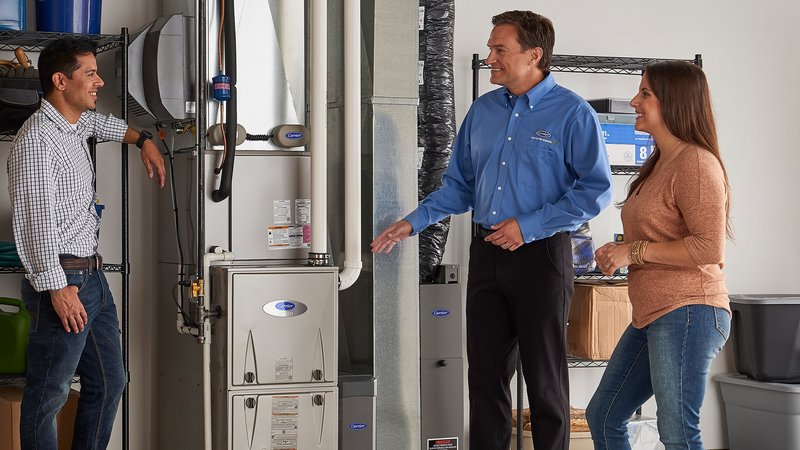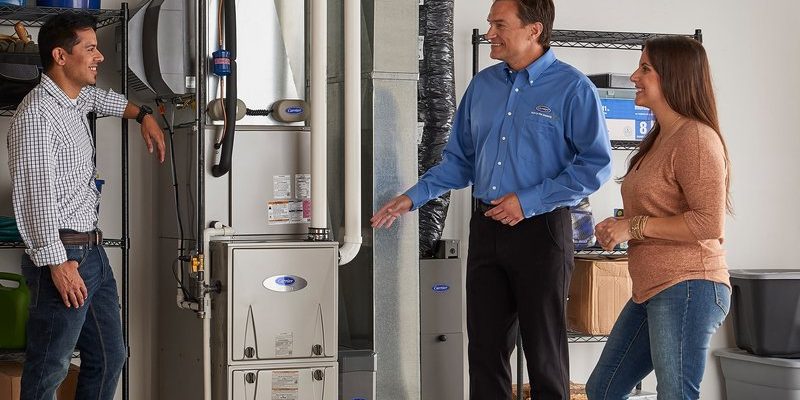
It’s a bit like borrowing a car. You get to drive it, keep it tidy, and maybe even fill it up with gas, but officially registering the car? That’s usually the owner’s call. With HVAC units—especially ones as respected as Carrier—you might be surprised at how many people (tenants, landlords, and even property managers) get tripped up by who can register the system for warranty and service benefits.
Let me walk you through who actually holds the keys when it comes to registration, warranties, and “official” ownership. We’ll break it down in plain English, with all the real-world details you might need—just like if we were chatting over a cup of coffee in your new living room.
What Does “Registering” a Carrier HVAC System Even Mean?
First things first—when someone talks about “registering” a Carrier HVAC system, they’re usually talking about two things: securing the manufacturer’s warranty and linking the system’s details to a specific owner in Carrier’s records. Kind of like syncing your new phone with your account so you’re covered if it crashes or needs repair.
When an HVAC system is installed, most brands (Carrier especially) offer an extended warranty if you register the product within a certain time window—often 60 to 90 days. This extra coverage can save big bucks later if anything goes wrong. Registration also allows Carrier to help with troubleshooting, code lookups, and giving you model-specific advice if you call their support line.
But here’s the thing: the system isn’t just a gadget you own, like a remote. It’s a *building fixture*—tied to the property, not to the person living there. That fact is at the heart of whether a tenant can register the HVAC system or not.
Who Is Allowed to Register a Carrier HVAC System?
Honestly, this is the question that stumps a lot of renters right out of the gate. Carrier—like most major HVAC brands—wants the system registered by the *legal owner* of the equipment. In almost all cases, that’s the landlord or property manager, not the tenant.
Why does Carrier care? Think about it from their perspective. The warranty is an agreement with whoever paid for and owns the system, not just anyone who happens to use it. This way, if there’s a warranty claim or a part that needs to be reset, Carrier knows exactly who’s responsible for the property and system maintenance.
Sure, you might have access to the thermostat and even the remote, but when you try to register the system online, Carrier will often ask for:
- The property owner’s name and contact info
- Proof of purchase (like an invoice from the installer)
- The system’s model and serial numbers
- Installation address
If you’re the tenant, you probably don’t have (or legally control) all these details. Even if you did, the warranty would still only apply to the property owner—not you as the resident.
Can Tenants Register Carrier HVACs Anyway? What Happens If You Try?
Let’s say you’re determined to give it a shot. You track down the model and serial number, hop onto Carrier’s registration page, and fill in your own info as the resident. What happens?
Here’s where things get tangled. Carrier’s system might let you *submit* the form, but if the name on the purchase documents doesn’t match, it could flag the warranty as invalid or leave it “unconfirmed.” In some cases, they’ll reach out to verify. If they find out you’re not the owner, the registration might be rejected or reassigned.
Think of it like this: registering the HVAC system as a tenant is kind of like trying to pair a universal remote to a TV you don’t own. You might get it to sync, sort of, but if there’s ever a real issue—like requesting a code reset or warranty replacement—Carrier will want proof that you’re authorized.
Bottom line: while you might be able to *fill out* a registration form online, the real authority (and all the benefits) belong to whoever can prove they own the property and the system.
Why Landlords Usually Control Carrier HVAC Registration
This might feel a little frustrating, but it’s rooted in both legal and practical reasons. The HVAC system is part of the property, just like the wiring or plumbing. That means:
- The landlord is responsible for maintaining and repairing it
- They’re also the one who paid for it and can prove purchase
- If the property is sold, the warranty typically follows the new owner—not the tenant
Landlords often want to register the system themselves so they can manage warranty claims, schedule service, and keep records tidy for the property’s long-term health. This cuts down on confusion if something breaks down or needs pairing with smart-home codes or other remote-controlled equipment.
Plus—if you move out, the HVAC system stays. The landlord’s connection to the system is permanent, while the tenant’s is temporary. The warranty needs to stick with the property owner so there’s no trouble if another tenant arrives or the property changes hands.
What Should Tenants Do If There’s an Issue With the Carrier HVAC?
Okay, so you can’t register the Carrier HVAC system yourself. But what if you need support, troubleshooting help, or a repair? Is there anything you can do?
This is where communication is everything. If you’re having trouble with the temperature, the code on the remote, or the system needs to be reset, your best bet is to:
- Contact your landlord or property manager right away
- Give them details: the error, any strange noises, and what you’ve tried (like changing the battery in the remote)
- Request that they contact Carrier or a licensed HVAC technician for support or repair
Some landlords are happy to let tenants handle minor troubleshooting, like syncing the remote or checking for tripped breakers. But anything that involves warranty claims, deeper diagnostics, or pairing new parts really does need to go through the official owner.
If you’re unsure, always ask before you try to fix or register anything big—this keeps everyone on the same page and protects your security deposit, too.
Are There Any Alternatives for Tenants Who Want More Control?
You might be wondering, “Is there any way for tenants to have more say over their Carrier HVAC, especially when it comes to troubleshooting or smart-home pairing?” The answer is a soft yes—with a little teamwork.
Here are a couple of routes that sometimes work:
- Ask your landlord to register the system in their name, but share documentation or support contacts with you. This way, you have info handy if you need to sync, reset, or troubleshoot with Carrier’s help.
- Use universal remotes or third-party smart thermostats (with permission). Some landlords are open to letting tenants pair new controls that make it easier to manage the system—just be sure to discuss it first.
- Negotiate lease terms that specify maintenance roles. Sometimes, a lease can spell out who’s responsible for registering, syncing, and resetting remote-controlled or smart HVAC systems.
Remember: while the equipment (and its warranty) will always belong to the owner, having a proactive, respectful conversation can go a long way in making sure you’re both comfortable and covered.
Comparing Carrier HVAC Registration With Other Brands
Just for a quick perspective—Carrier isn’t alone in their approach. Most big HVAC brands (like Trane, Lennox, or Goodman) have similar policies. They want the property owner to register the system, since warranties are linked to the purchase and installation address, not the resident.
However, some brands (especially newer smart-home gear) do offer more flexibility for things like:
- Remote code syncing
- Firmware updates you can reset or pair yourself
- App-based troubleshooting tools
But when it comes to the *major* warranty or registration points, tenants almost always run into the same roadblock: unless you’re the owner, you can’t fully register or claim ownership of the system in the manufacturer’s eyes.
Final Thoughts: Navigating Carrier HVAC Registration as a Tenant
So, can tenants register Carrier HVAC systems that were purchased by a landlord? Not officially, no. The registration, warranty, and all the long-term benefits are designed to stick with the property owner—not the person renting the space. It’s a little like living with a high-tech appliance you didn’t buy: you get to enjoy it, but you’re not the one on the paperwork.
The good news? Open communication with your landlord—or property manager—solves most problems. If you ever need to sync remotes, reset the system, or get troubleshooting help, they’re your best point of contact. With a little teamwork, you can keep everything running smoothly, stay cool (or warm), and avoid any confusion down the road. In the end, it’s all about knowing your role, asking questions, and working together to make “home” as comfortable as it can be.
